The word is out -- container gardening is for both novice and experienced gardeners alike. It's the perfect way to experiment with plants, delve into edibles, and exercise creativity. No longer limited to houseplants and herbs on a sunny windowsill indoors, and porches and patios outside, container plantings are now gracing apartment balconies, larger landscape designs, and urban sidewalks. The sky is literally the limit with container gardens; there are hundreds of innovative possibilities.
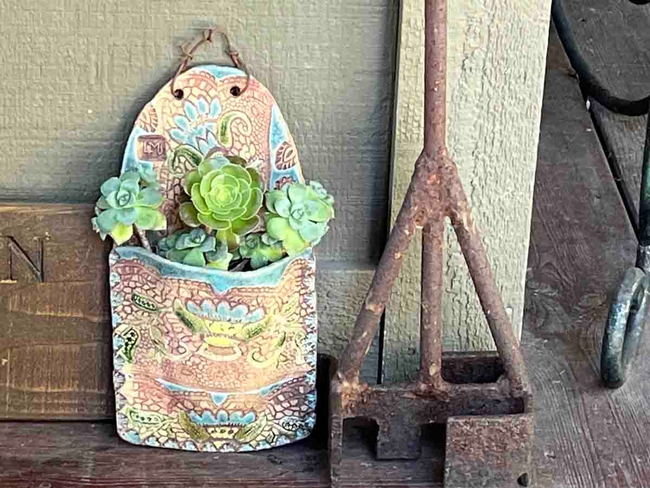
What to plant: Most plants grown in the ground can also be grown in a container. Both annuals and perennials do well as container displays. If putting several plants together in one pot, consider light, space, water, and fertilization requirements. A design technique that creates an attractively-planted container is the “thriller, filler, spiller” technique. Thrillers are plants that add height and a vertical element to the planter, fillers are lower, mounded plants which make the container look full, and spillers are trailing plants that hang over the edge of the planter. For example, an edible container planting employing this technique could consist of tomato (thriller), basil, chives and marigold (fillers), and trailing nasturtium (spiller) growing together in an appropriately-sized container. As companion plants, they also have a mutually beneficial relationship with one another. For an ornamental container using this method, Green Acres Nursery in Folsom suggests a Striped Rush (thriller), Japanese Spurge (filler), Coral Bells (filler), Potato Vine “Black Heart” (spiller), and Lysimachia (spiller) for shady areas. Other suggestions can be found online by googling “container garden recipes.”
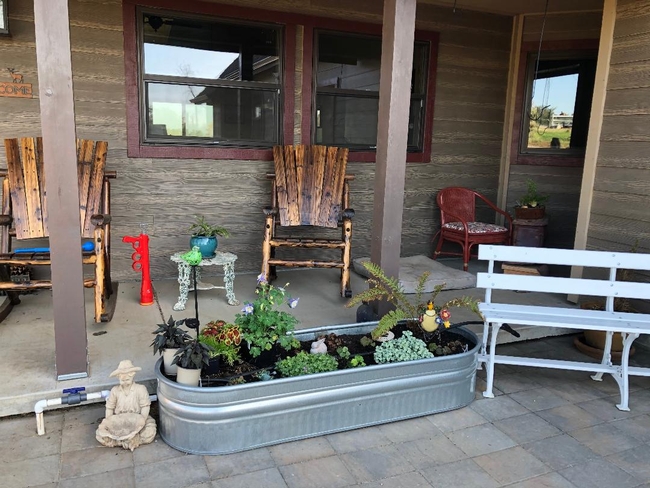
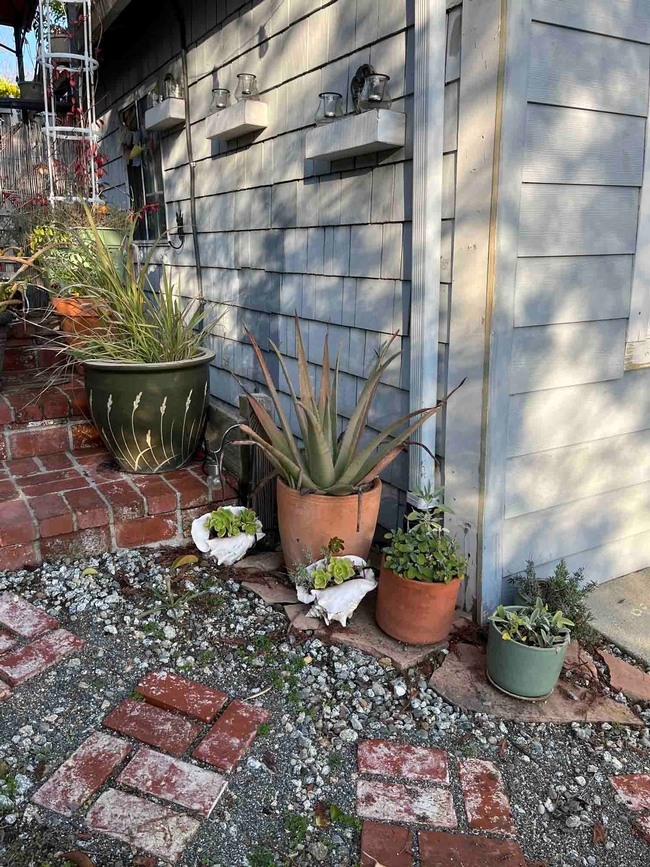
All containers need drainage. Self-watering containers may be complicated and should be used with care to avoid over- or under-watering. They can be purchased or made at home. There are many YouTube videos that provide instruction on DIY self-watering containers. A recent newcomer is the grow bag; these range in size and are easy to fold up and store when not in use. Made from breathable fabric, grow bags help retain soil moisture. The fabric bag helps to prune a plant's roots, which creates a more vigorous root system and helps to grow a stronger, healthier plant.
Consider the height and style of the container. Tall, narrow pots are less stable than short, squat ones. Avoid planting in a pot that narrows at its neck when planting perennials because it is difficult to pull a plant out once its roots have spread, and plants often become root-bound and need re-potting. Narrow-necked containers are best used with annuals.
Container Preparation: If you are drilling holes in a container for drainage, a five-eighths-inch drainage hole is a good size. Larger pots will require more than one drainage hole. Consider placing screening over the holes to help keep the potting mix from washing out of the container. When re-using a container, avoid spreading soil-borne disease by disinfecting with a 9-1 water-to-bleach solution prior to planting. Saucers should be used under pots to prevent staining on decks, patios, or driveways. Make sure the container does not sit in water, which can cause plant roots to rot.
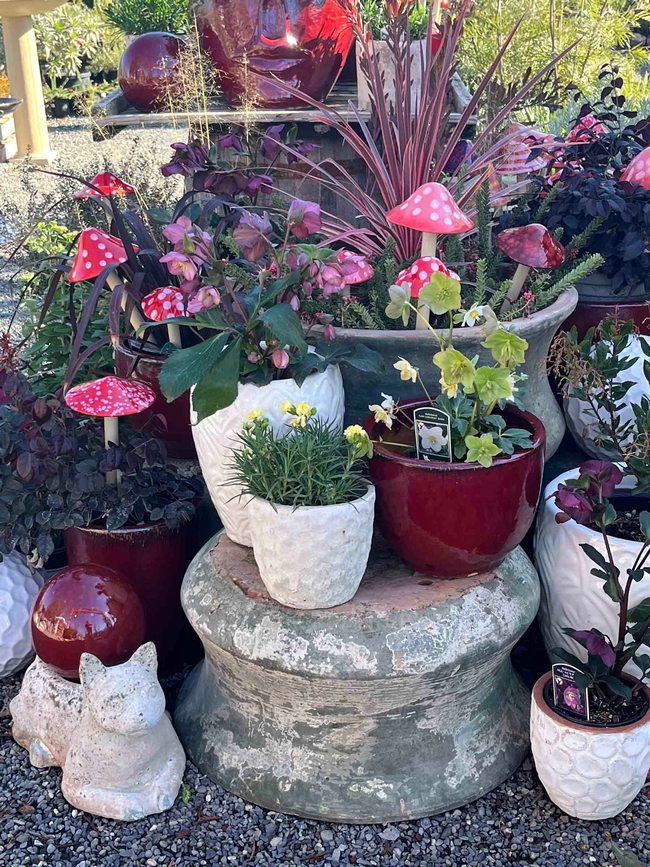
Soil and fertilizer: When planting in containers, it is important to use the correct medium for optimum results. The terms “potting soil” and “potting mix” are often used interchangeably, but there is a difference between the two. Potting soil may include dirt, while potting mix does not. Because potting mix is soilless, it does not include any pathogens (fungus and other soil-borne diseases) which makes it safer to use for plants grown in containers.
A high-quality potting mix will be lighter, with the ability to keep the soil from becoming compacted. Soil compaction limits a plant's access to water and nutrients, and poor aeration can suffocate its roots. Mineral components (perlite, pumice, vermiculite) added to soil mixtures affect aeration, structure, and water retention. One or more of these components may be added to a potting mix. The remaining ingredients will be either organic or animal-based materials or inorganic-natural materials, depending on the brand and type of mix. Organic/animal-based materials include sphagnum moss, aged composted bark, manure, worm castings, bat guano, or coconut coir (a material made from coconuts which is sustainable and is used to replace sphagnum moss, which is not). Some mixes include either synthetic or organic fertilizers, providing nutrients. Look for nutrient-rich blends containing alfalfa, bone, or kelp meal.
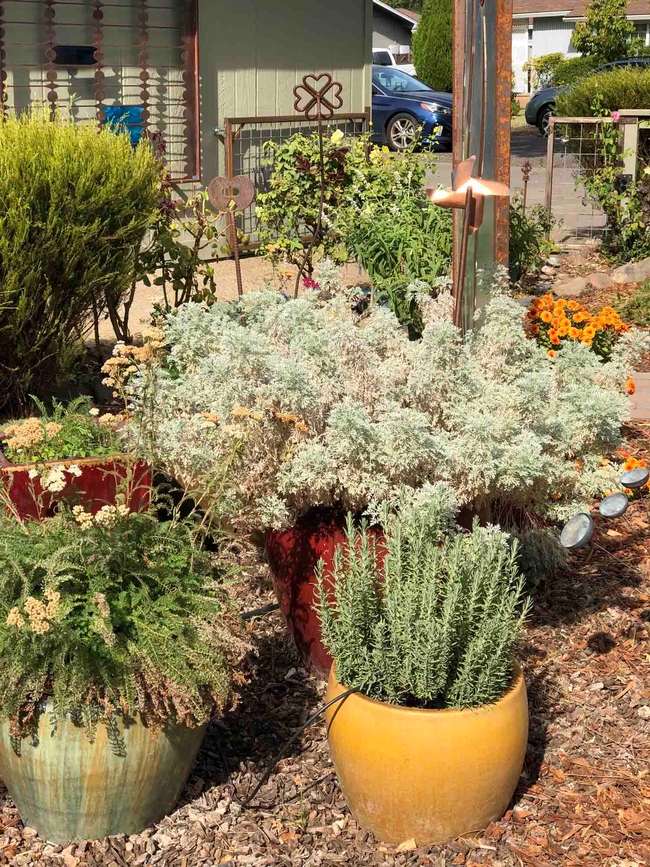
It is important to buy quality potting mixes. Generic or less expensive brands may include garden soil, which affects the soil's texture and quality. Look for potting mixes that list their ingredients on the back of the package. If the mixture's ingredients are not listed, don't buy it.
Container Care and maintenance: Container-grown plants need more frequent watering than those growing in the soil. Lower soil volume and less insulation cause the soil in a pot to heat up and evaporate water more quickly. A soil meter can help determine if your plants are thirsty, but a finger poked into the pot is an efficient and cheap way to determine moisture level. Plants, especially edibles, prefer a moist soil. Water needs to reach the entire root system. If your water contains salts that deposit on your fixtures, it is important to water thoroughly enough for water to come out the bottom of the container. This leaches salts and prevents harmful levels from accumulating in the container. Try to avoid wetting the plant's leaves, as it can lead to leaf burn. Consistency when watering will lead to happy container plants. You may consider installing a drip system for outside containers.
Deadheading ornamentals will ensure repeat blooms and helps keep the container looking tidy. Keep an eye out for pests such as aphids. Slugs, snails, and earthworms can also cause damage to your container garden. Inspect plants frequently, and take action if necessary.
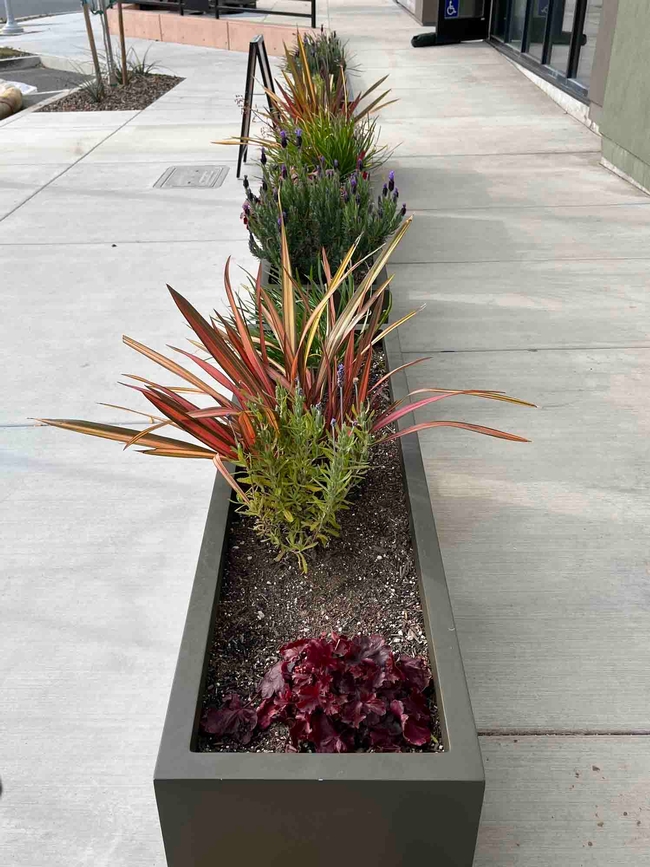
Benefits: Flowers, fruits, vegetables … pretty much anything that can be planted in the ground can grow in a container. For gardeners (and would-be gardeners) who are short on time or space, or lack adequate soil, or must contend with critters (like deer, gophers, or moles), growing fresh flowers and food are within the realm of possibility. The healthy attributes of gardening, including lower stress levels and increased serotonin, are available to anyone caring for plants. Container gardening provides an opportunity to attract birds and pollinators into the neighborhood, as well as a quick “do over” in landscape design. Containers make it possible for anyone to enjoy the beneficial aspects of gardening.
UC Master Gardeners of Butte County are part of the University of California Cooperative Extension (UCCE) system. To learn more about us and our upcoming events, and for help with gardening in our area, visit our website. If you have a gardening question or problem, email the Hotline at mgbutte@ucanr.edu or leave a phone message on our Hotline at (530) 538-7201. To speak to a Master Gardener about a gardening issue, or to drop by the MG office during Hotline hours, see the most current information on our Ask Us section of our website.